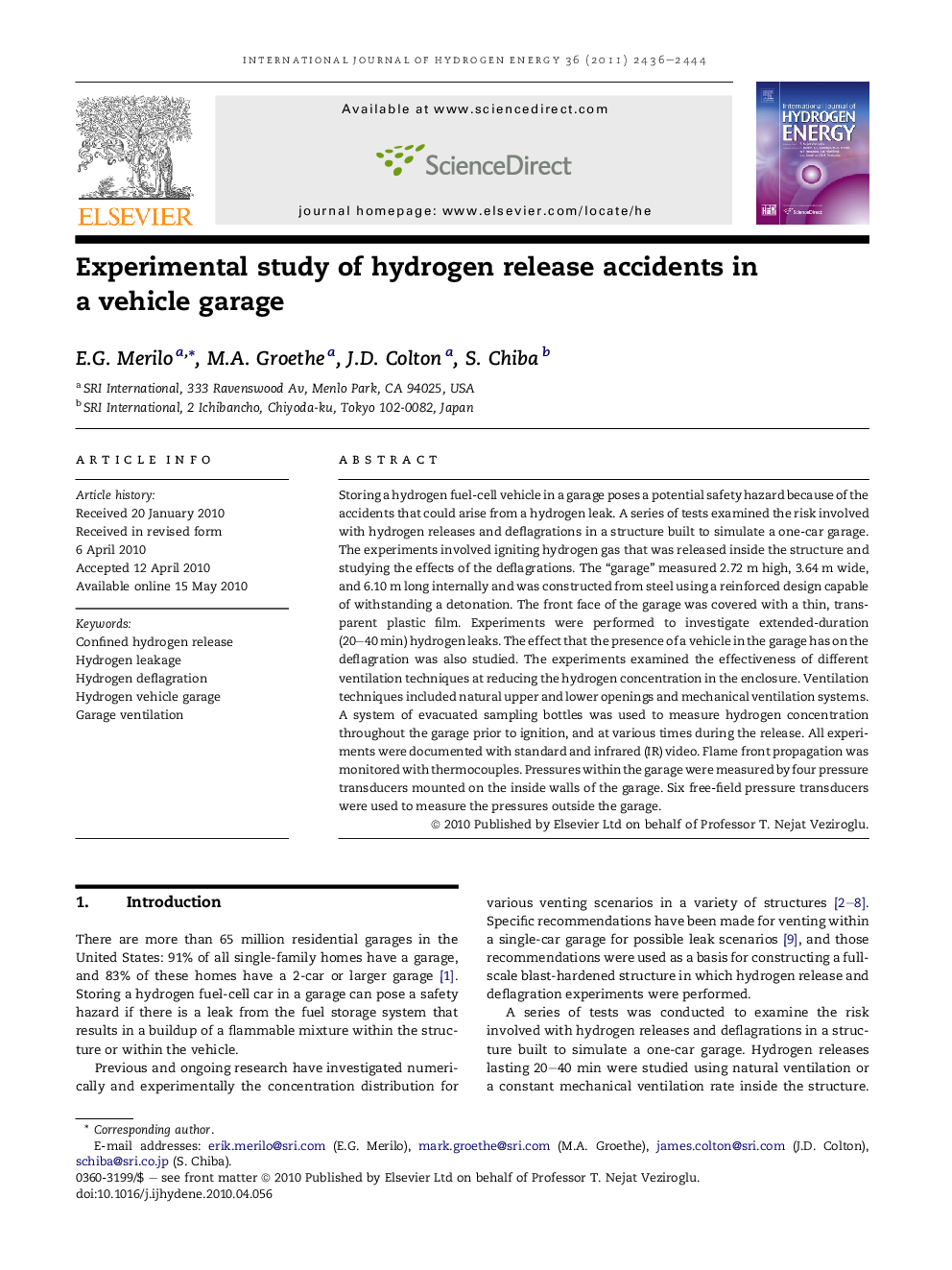| Article ID | Journal | Published Year | Pages | File Type |
|---|---|---|---|---|
| 7724519 | International Journal of Hydrogen Energy | 2011 | 9 Pages |
Abstract
Storing a hydrogen fuel-cell vehicle in a garage poses a potential safety hazard because of the accidents that could arise from a hydrogen leak. A series of tests examined the risk involved with hydrogen releases and deflagrations in a structure built to simulate a one-car garage. The experiments involved igniting hydrogen gas that was released inside the structure and studying the effects of the deflagrations. The “garage” measured 2.72Â m high, 3.64Â m wide, and 6.10Â m long internally and was constructed from steel using a reinforced design capable of withstanding a detonation. The front face of the garage was covered with a thin, transparent plastic film. Experiments were performed to investigate extended-duration (20-40Â min) hydrogen leaks. The effect that the presence of a vehicle in the garage has on the deflagration was also studied. The experiments examined the effectiveness of different ventilation techniques at reducing the hydrogen concentration in the enclosure. Ventilation techniques included natural upper and lower openings and mechanical ventilation systems. A system of evacuated sampling bottles was used to measure hydrogen concentration throughout the garage prior to ignition, and at various times during the release. All experiments were documented with standard and infrared (IR) video. Flame front propagation was monitored with thermocouples. Pressures within the garage were measured by four pressure transducers mounted on the inside walls of the garage. Six free-field pressure transducers were used to measure the pressures outside the garage.
Related Topics
Physical Sciences and Engineering
Chemistry
Electrochemistry
Authors
E.G. Merilo, M.A. Groethe, J.D. Colton, S. Chiba,
